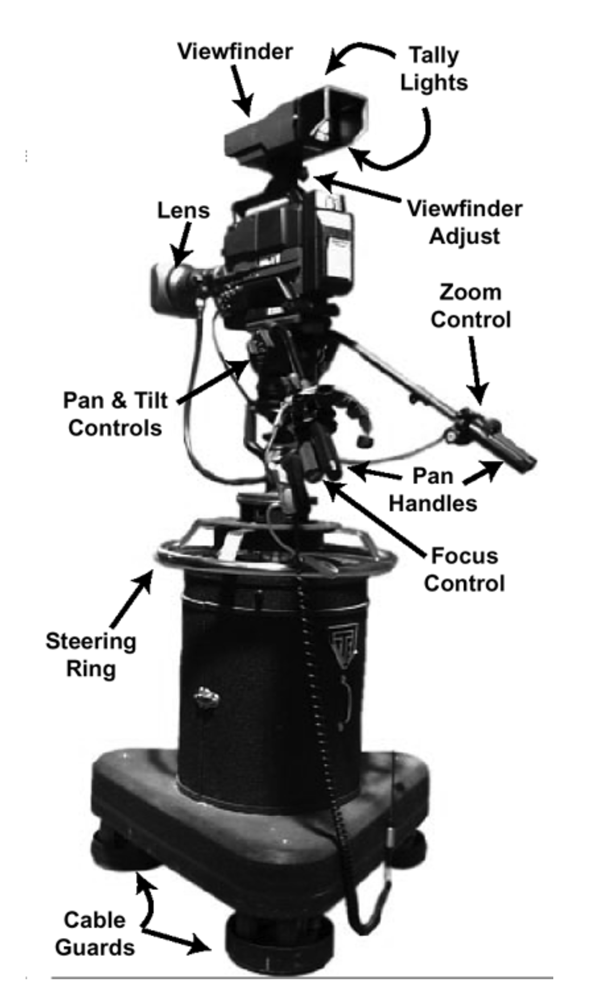 Camera Operation
Camera Operation
Types of shots:
1. Extreme Long Shot: Overall shot of entire set. Abbreviated XLS on Scripts.
2. Long Shot: Defined as head to toe on talent. Abbreviated LS on scripts.
3. Medium shot: Cut talent off at the bust or just below knees. Abbreviated MS on scripts.
3. Bust shot: Cut talent off at the bust. Sometimes called a tight shot. Abbreviated TS.
4. Extreme Close Up: used to show closure and emotion on talents face. Abbreviated XCU on scripts.
5. Box Shot: shot adjusted to right or left to insert graphic
6. Establishing shot: used to re-establish the scene e.g. starting with long shot of the scene then going to close-ups
7. Over the Shoulder Shot: shooting the action behind someone
8. Two shot: Shot with two people in it.
9. Three shot: Shot with three people in it.
Camera Commands
Note: All camera commands refer to the direction the front of the lens is going.
1. Pan right / Pan Left: Move camera horizontally.
2. Tilt up / Tilt down: Move camera vertically.
3. Zoom in / Zoom out: Change lens aspect (makes subject appear closer or farther away..
4. Truck in / out: moves camera to and away from the set.
5. Dolly left / right: moves camera across the set while camera faces subject constantly.
6. Arc left / right: move camera in a semi-circle.
7. Crab: Moving the camera sideways while keeping camera position fixed.
8. Pedding up / down: Moving the camera up and down on the pedestal column.
9. Rack in / out: Move the plane of focus toward or away from the camera. Cam be used to mean taking the focus in and out for artistic purposes.
10. Lock down shot: Camera is stationary and set on a single shot. Often used when the shot is a long shot or extreme long shot and no staff is needed for the camera.
Common Camera Terms
1. Critical focus: Adjusting focus so that it remains “in” during the full length of a zoom. To get critical focus, zoom in on the subject, focus, and then get the needed shot.
2. Crash focus: A critical focus. Term normally implies time is of the essence: get your focus and get your shot as quickly as possible.
3. Rack focus: used without a command, usually just means take your camera out of focus.
4. Closure: In close-ups, cutting the very top of the talent’s head off to get a tighter shot on the face, increasing emotional impact.